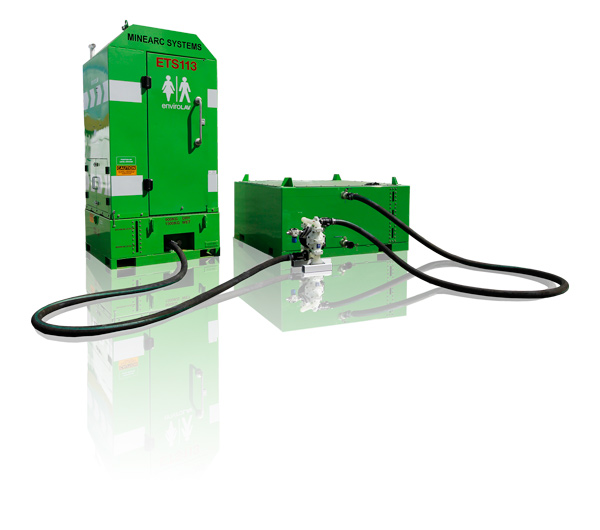Solar-Powered Toilet - SolarLAV
The solar-powered SolarLAV is a rugged design toilet system that is ideal for use in remote locations including surface mine sites and highway rest stops. Solar panels, battery back-up and an Uninterruptible Power Supply (UPS) are all integrated into a fully assembled module that is easy to drop in, with no civil works required.
SolarLAV is available as a dual toilet with both male and female facilities; or as a wheelchair accessible unisex toilet. Designed to be simple to operate and maintain, the self-contained SolarLAV can last up to 6 months before emptying is required, based on standard usage in optimal conditions.
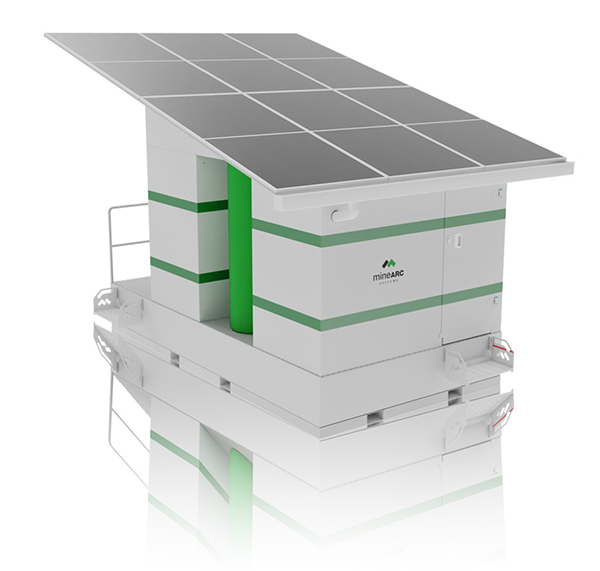
The SolarLAV is a toilet system built for harsh remote locations. It’s a durable design with solar panels, large water storage facilities and biological treatment of waste to allow long lead times between maintenance visits.
SolarLAV is a hygiene solution based on the EnviroLAV, with a structure of latrine facilities mounted on top of a miniature biological treatment plant. Waste matter is deposited directly into the treatment tank and is fully isolated throughout the process.
MineARC’s biodegradable, non-toxic EnviroZYME solution works to break down the matter with every flush, involving no handling of hazardous chemicals at any stage. The efficiency of the EnviroZYME solution ensures the system emits a minimum effluent odour and the waste treatment process causes minimal environmental impact.
- Solid Steel Construction (3mm)
- Solar Panels
- Solar Power Inverter
- Solar Power Charger
- Potable Water Storage Tank
- Waste Tank
- Waste Drain
- Lockable Electrical Room
-
- Ventilation Panels
- LED Lighting
- Hand Rails & Safety Rails
- Skid Base
- Forklift Slots
- Stainless Steel Sink with Metered Faucet
- EnviroWASH Soap Dispenser
- Jumbo Toilet Roll Holder
- Wheelchair Access Modifications
- Unisex or Dual Use
- Pedestal or Squat Pan Facilities
- Stainless Steel Toilet
- Self-Closing Door Hinges
-
- Sharps Disposal
- Occupancy Indicator Lighting
- Shatterproof Mirror
- Additional Jumbo Toilet Roll Holders & Hand Towel Dispensers
An optional addition to the EnviroLAV System, the Waste Transfer Tank is a fully portable unit that allows for efficient waste removal.
Utilising a gravity feed for the transfer of waste from the EnviroLAV to the waste transfer tank, the unit can hold up to 2,000L.
SolarLAV Toilet – Exterior
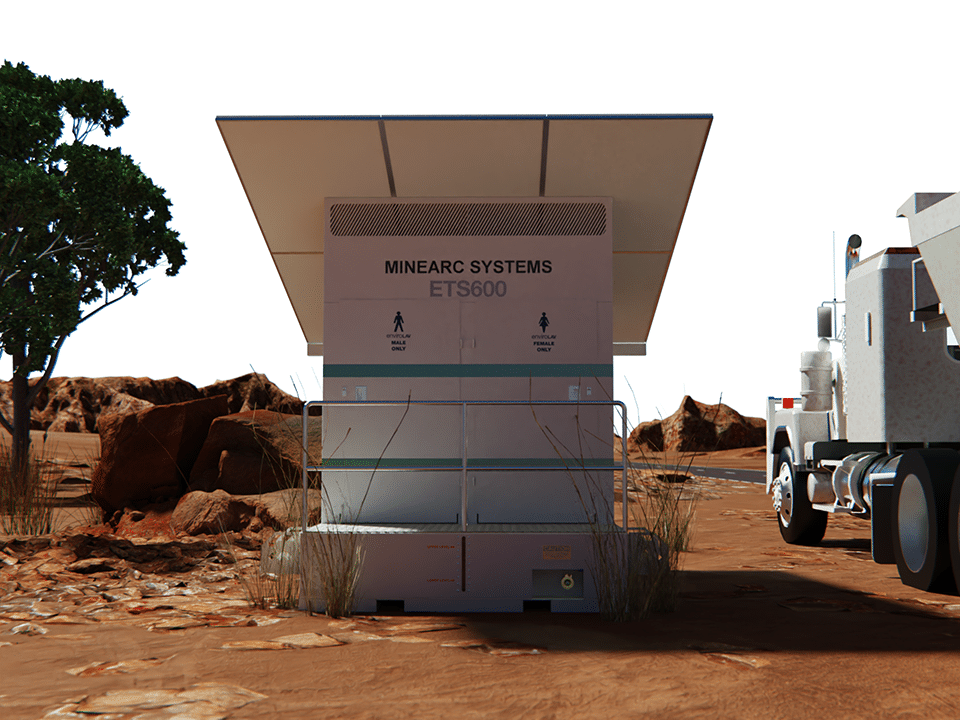
SolarLAV Dual Toilet
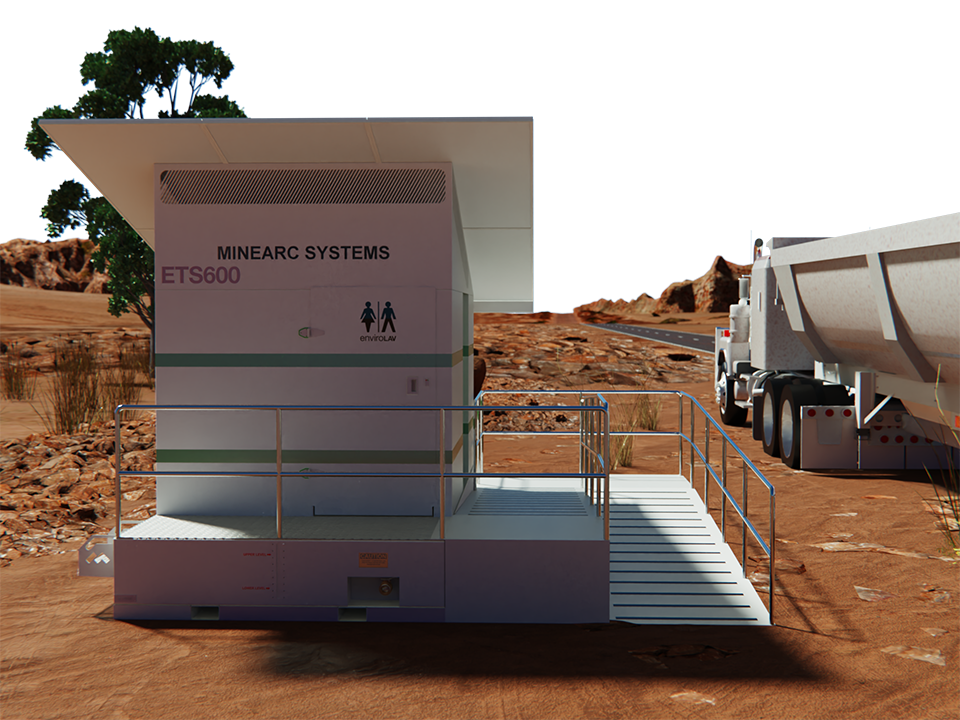
SolarLAV Unixex Toilet – Wheelchair Accessible
Related Products
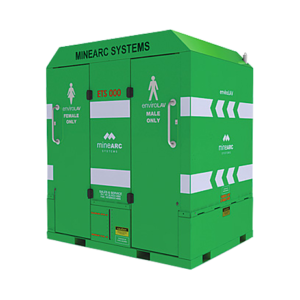
Underground Toilet – EnviroLAV
Underground Toilet – EnviroLAV Underground Toilet technology by MineARC offers the latest innovation in self-contained, portable waste management systems – ideal for use in underground mines, tunnelling construction and remote locations. Designed to be simple to operate and maintain, the EnviroLAV is a semi-permanent structure that can be used both above and below ground wherever
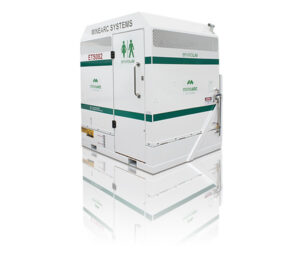
Coal-Spec Toilet – EnviroLAV
Coal-Spec Toilet – EnviroLAV Coal-Spec toilets from the EnviroLAV range are the latest innovation in self-contained, portable toilet systems. Their intrinsically safe design makes them ideal for use in coal mining. Designed to be simple to operate and maintain, the EnviroLAV Coal-Spec is a semi-permanent structure that can be used wherever there is access to
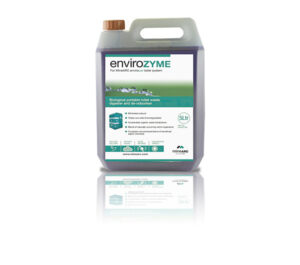
Toilet Consumables – EnviroLAV
Toilet Consumables – EnviroLAV MineARC’s biodegradable EnviroLAV Toilet Consumables include the non-toxic EnviroZYME solution that works to break down the matter with every flush, involving no handling of hazardous chemicals at any stage. The efficiency of the EnviroZYME solution ensures the system emits minimum effluent odour and the waste treatment process causes minimal environmental impact.


